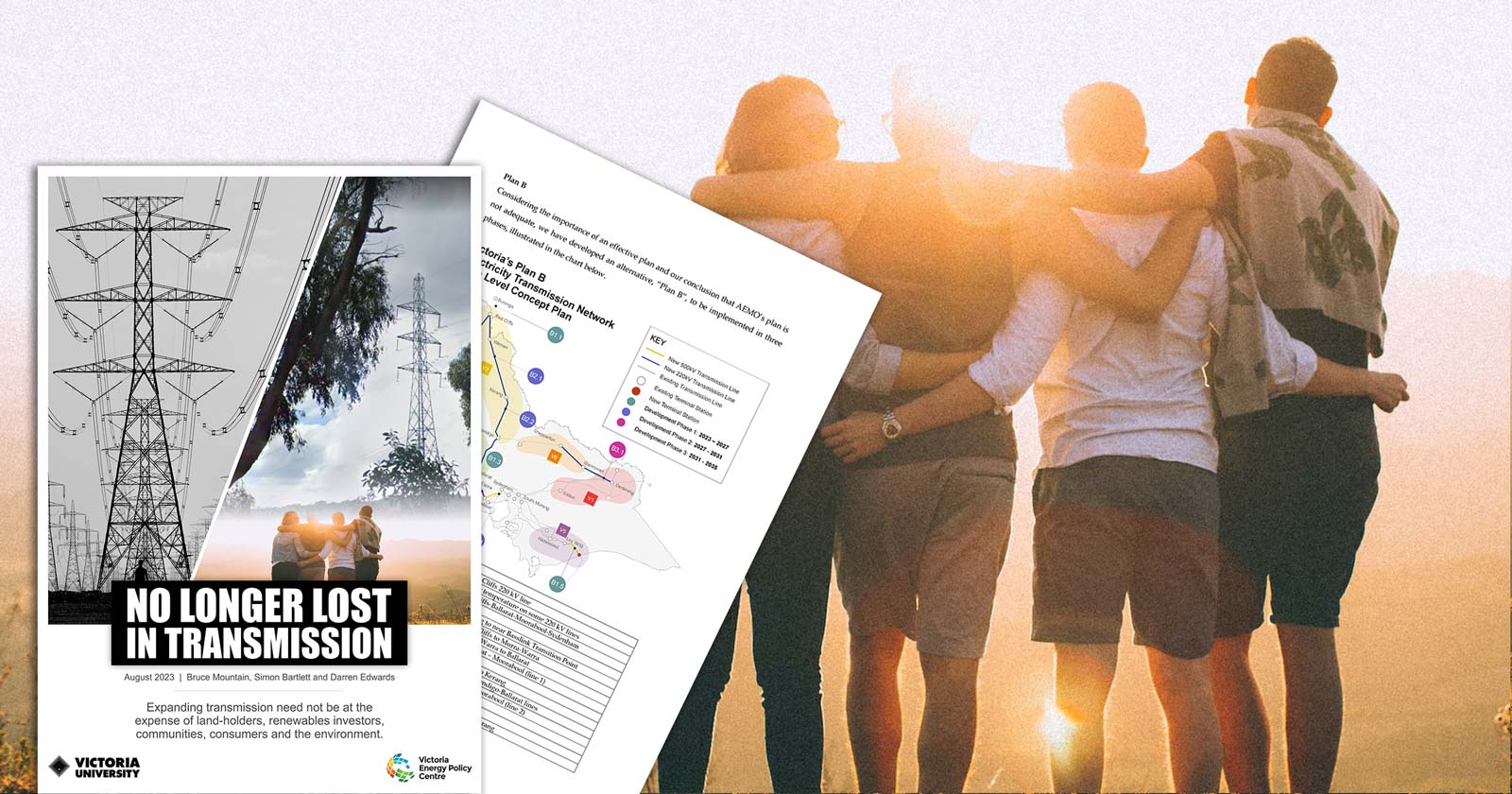No longer lost in transmission

Expanding transmission need not be at the expense of land-holders, renewables investors, communities, consumers and the environment
For more than three years, Victoria's regional communities have faced a David and Goliath battle against the Australian Energy market Operator (AEMO) and its proposed large-scale high-voltage transmission projects across Victoria. Community opposition has been fierce and relentless as they oppose not only the direct impact on their regions, communities and livelihoods, but the regulatory framework and planning process.
Communities across regional Victoria have rightly reacted to poor planning and engagement, lack of public participation in the decision-making process, broken regulatory framework that is delivering these projects, lack of trust in the cost benefit analysis, lack of holistic coordination within and between jurisdictions, lack of transparency and trust in the institutions delivering transmission projects. This is what needs to be fixed rather than bulldozing ahead via Ministerial Orders and expecting communities to ‘accept’ the burden and outcomes of a planning framework that is broken.
As far as communities are concerned, this is a David and Goliath battle with a significant power imbalance between institutions and the public.AEMO Victoria Planning (AVP) and Transgrid, the New South Wales transmission monopoly, have recently completed the regulatory assessment for VNI-West, a transmission “super-highway” between Melbourne and New South Wales, via western and northern Victoria.
According to seasoned energy experts, VNI-West promises much but will deliver little. In fact, AVP/Transgrid’s modelling results show that the already extraordinary curtailment of renewable generators in Victoria will barely improve after it is commissioned, and then it will get even worse than it is now. This means that the enormous expansion of renewable electricity needed to achieve Victoria’s energy transition will not happen, without big subsidies to compensate generators for the curtailment that AVP/Transgrid’s VNI-West will deliver.
With VNI-West it is likely that the Victorian Government’s renewable electricity targets will not be delivered and instead the Government will be forced to subsidise the continued operation of Victoria’s dirty brown coal generators in order to keep the lights on. The common perception is that the big losers from VNI-West will be affected land holders in Victoria. In fact the list of losers also includes the environment, consumers and renewable electricity producers.
All is not lost.
The VEPC, in collaboration with Simon Bartlett and Darren Edwards, has studied the VNI-West proposals intensively for several years. The consolidated critique set out in their report substantiates these claims. Instead of developing a single super-highway, “Plan B” proposes augmentations mostly of existing lines, using existing easements that they conclude will greatly expand Victoria’s renewable generation hosting capacity, in a way that will be more acceptable to consumers, regional communities, land holders, renewables developers and the environment.
"Plan B: No longer lost in transmission" was officially launched at Victoria University’s city campus on 2 August 2023.

